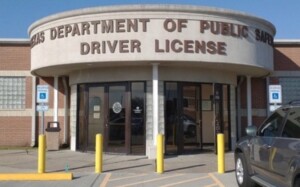Complete 2025 Guide to Get Your License

Getting your driver’s license is an exciting milestone in every teenager’s life, especially in Texas, where driving is essential for independence. If you’re a 16-year-old Texan eager to hit the road legally, this comprehensive guide will walk you through the steps you need to follow. The Texas Graduated Driver License (GDL) program provides a clear path for teen drivers to safely gain driving experience before earning full driving privileges.
Understanding the Texas Graduated Driver License (GDL) Program
The Texas Graduated Driver License program was created to help teen drivers develop critical driving skills gradually under safer, more controlled conditions. This phased approach significantly reduces accidents among novice drivers by providing a structured learning process.
The program consists of three distinct phases:
- Learner License (Permit): This phase begins at age 15 after completing the first 6 hours of the classroom portion of driver education.
- Provisional License: Available at age 16 after holding a learner’s license for six months.
- Full License: Obtained when turning 18, removing all provisional restrictions.
This graduated approach allows teens to build experience while limiting high-risk driving situations, ultimately creating safer drivers on Texas roads.
Step 1: Complete Driver Education Requirements
Before applying for your learner license, you must complete the required driver education course. In Texas, teens have several options for completing these requirements:
- Parent-Taught Driver Education: This popular option allows parents to serve as instructors, offering flexibility for busy families.
- Online Driver Education: Virtual Drive of Texas offers a comprehensive online driver education course that meets all state requirements.
- Traditional Driving Schools: In-person classes with professional instructors.
The Texas driver education requirements include:
- 24 32 hours of classroom instruction (or online equivalent)
- 144 hours of behind-the-wheel training, 7 hours of lessons, and 7 hours of observation must include including 10 hours at night
- 30 hours of supervised driving that includes 10 hours of night driving and 7 hours of observation time
The parent-taught option gives families more control over the learning schedule, allowing you to pace lessons according to your comfort level and availability.
Step 2: Gather Required Documentation
Before heading to the Texas Department of Public Safety (DPS), ensure you have all the necessary documentation. Being well-prepared will save you time and prevent multiple trips to the DPS office.
Required documents include:
- Proof of identity: Birth certificate, passport, or certificate of citizenship
- Proof of Social Security number: Social Security card or W-2 form
- Proof of Texas residency: Utility bills, school enrollment records, or bank statements
- Verification of Enrollment and Attendance (VOE) form: Obtained from your high school
- DE-964 Certificate: Proof of driver education completion provided by your course provider
Common mistakes to avoid include bringing expired documents or forgetting to have a parent or guardian present at the DPS office, as they must sign the application for minors.
Step 3: Apply for Your Learner License at the DPS
Once you’ve completed the classroom portion of your driver’s education and have all the required documents, you can apply for your learner license:
- Schedule an appointment at your local Texas DPS office
- Bring all required documentation
- Complete the application form (DL-14A)
- Pay the required fee (approximately $16)
- Pass the vision test
- Pass the knowledge test (written exam)
The knowledge test covers Texas traffic laws, road signs, and safe driving practices. To prepare for this test, you can use DPS test preparation resources and practice tests offered by Virtual Drive of Texas.
Step 4: Pass the Written Knowledge Test
The written knowledge test consists of 30 questions about Texas traffic laws, road signs, and safe driving practices. To pass, you must correctly answer at least 21 questions (70%).
Tips for success:
- Study the Texas Driver Handbook thoroughly
- Take multiple practice tests to familiarize yourself with question formats
- Focus on road signs and right-of-way rules, which are common test topics
- Get plenty of rest before test day to ensure you’re alert
If you fail the test, you’ll typically need to wait at least one day before retaking it. Each additional attempt may require an additional fee, so thorough preparation is essential.
Step 5: Complete the Impact Texas Teen Drivers (ITTD) Program
Before taking your road test, you must complete the Impact Texas Teen Drivers (ITTD) program. This free, two-hour video program emphasizes the dangers of distracted driving and must be completed no more than 90 days before your road test.
The program covers:
- Consequences of distracted driving
- Real-life stories from victims of crashes caused by distracted driving
- Strategies for avoiding distractions behind the wheel
After completing the program, you’ll receive a certificate of completion that you must present when taking your road test. Remember that this certificate is only valid for 90 days, so time your completion strategically.
Step 6: Fulfill the Six-Month Learner’s Permit Requirement
Texas law requires that you hold your learner license for at least six months before applying for your provisional license. During this period, you must adhere to specific restrictions:
- You can only drive when accompanied by a licensed driver who is 21 years or older
- The supervising adult must sit in the front passenger seat
- You must complete your behind-the-wheel training requirements
- You must log at least 30 hours of supervised driving practice
Use this time to gain valuable experience in different driving conditions, including night driving, various weather conditions, and different road types. Keep a detailed driving log of your practice hours, as you’ll need to submit this when applying for your provisional license.
Step 7: Pass the Road Skills Test for Your Driver’s License
After holding your learner license for at least six months, completing all required driver education, and turning 16, you can take the road skills test to obtain your provisional license:
- Schedule an appointment at your local DPS office
- Bring all required documentation, including your valid learner license and ITTD certificate
- Provide proof of insurance for the vehicle you’ll use in the test
- Ensure the vehicle is appropriately registered and passes the basic safety inspection
During the test, an examiner will evaluate your ability to:
- Control the vehicle
- Execute basic maneuvers like parallel parking
- Observe and obey traffic laws
- Use proper signaling and lane changes
- Demonstrate awareness of your surroundings
Practice these skills extensively before your test day, especially those you find challenging. Many teens struggle with parallel parking, so mastering this skill can significantly boost confidence.
Step 8: Understand Provisional License Restrictions
After passing your road test, you’ll receive a provisional license valid until you turn 18. This license comes with several necessary restrictions:
- Passenger restriction: For the first six months, you cannot drive with more than one passenger under 21 who is not a family member
- Nighttime driving restriction: You cannot drive between midnight and 5 a.m. unless for employment, school activities, or medical emergencies
- Cell phone restriction: You cannot use any wireless communication device while driving, including hands-free devices, except in emergencies
These restrictions are designed to minimize distractions and high-risk driving situations while you continue to gain experience. Violating these restrictions can result in license suspension or additional penalties, so it’s crucial to understand and follow them carefully.
Common Mistakes in the Licensing Process
Many teens encounter obstacles in the licensing process that could be easily avoided:
- Forgetting required documents: Always double-check your documentation before visiting the DPS
- Insufficient practice: Many teens fail the road test because they haven’t practiced enough in different conditions
- Poor vehicle maintenance: Ensure the vehicle for your road test has functioning lights, signals, and properly inflated tires
- Test day anxiety: Practice relaxation techniques and get plenty of rest before your test
- Rushing through the process: Take your time to build skills gradually rather than trying to get licensed as quickly as possible
The most successful applicants approach the process methodically, ensuring they’ve thoroughly prepared for each step.
Cost Breakdown for Getting a Driver’s License at 16
Understanding the costs involved in getting your Texas driver’s license can help you budget accordingly:
- Driver education course: $100-$500, depending on the method and the provider
- Learner license application fee: Approximately $16
- Provisional license fee: Approximately $16
- Impact Texas Teen Drivers program: Free
- Additional costs to consider:
- Vehicle insurance (significantly higher for teen drivers)
- Practice test materials
- Potential fees for retaking failed tests
Many families opt for parent-taught driver education, which is often more cost-effective than traditional driving schools and provides greater scheduling flexibility.
Tips for Passing Both Written and Driving Tests
Success on both the written and road tests requires thorough preparation:
- For the written test:
- Virtual Drive offers a guarantee to pass the DPS written test
- Study the entire Texas Driver Handbook
- Take multiple practice tests
- Focus on areas where you’re less confident
- Join study groups with other teen drivers
- For the road test:
- Practice in the exact vehicle you’ll use for the test
- Become familiar with the area around the testing center
- Master challenging skills like parallel parking and three-point turns
- Practice defensive driving techniques
- Get comfortable with real-world driving scenarios
Remember that examiners seek safe, confident drivers who demonstrate sound judgment. Being overly cautious can be just as problematic as being too aggressive, so aim for balanced, decisive driving during your test.
Conclusion
Obtaining your driver’s license at 16 in Texas is a significant achievement that comes with substantial responsibility. By following the steps outlined in this guide and developing strong driving skills, you’ll be well-prepared for both the licensing process and a lifetime of safe driving.
Remember that the Texas Graduated Driver License program is designed to help you build skills gradually in a safer environment. Embrace this learning process rather than viewing the restrictions as limitations, and you’ll develop habits that will serve you well throughout your driving career.
Ready to start your journey toward becoming a licensed Texas driver? Explore Virtual Drive of Texas’s driver education options to take your first step toward independence on the road.

